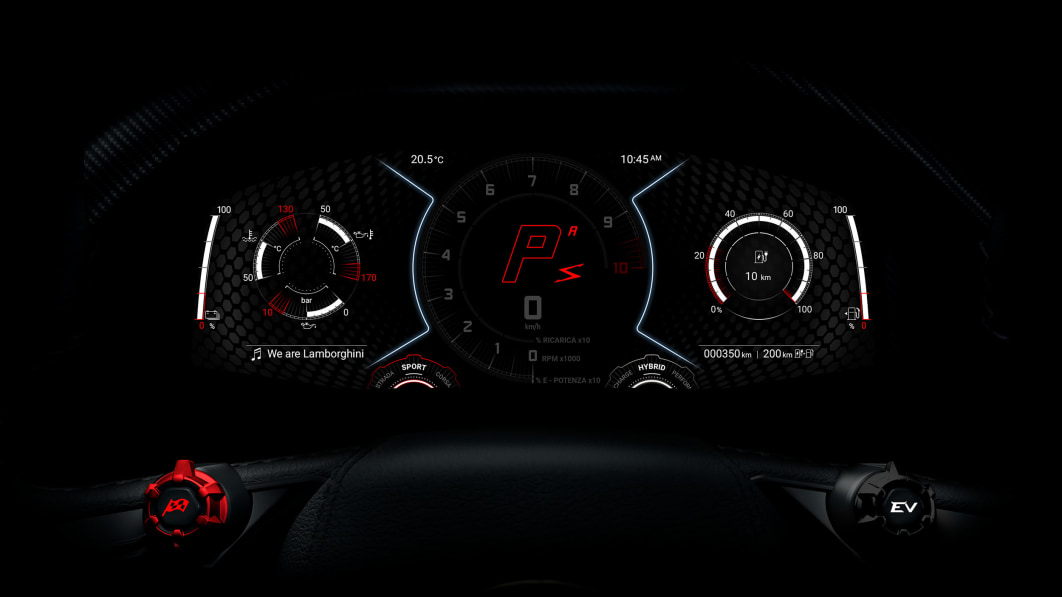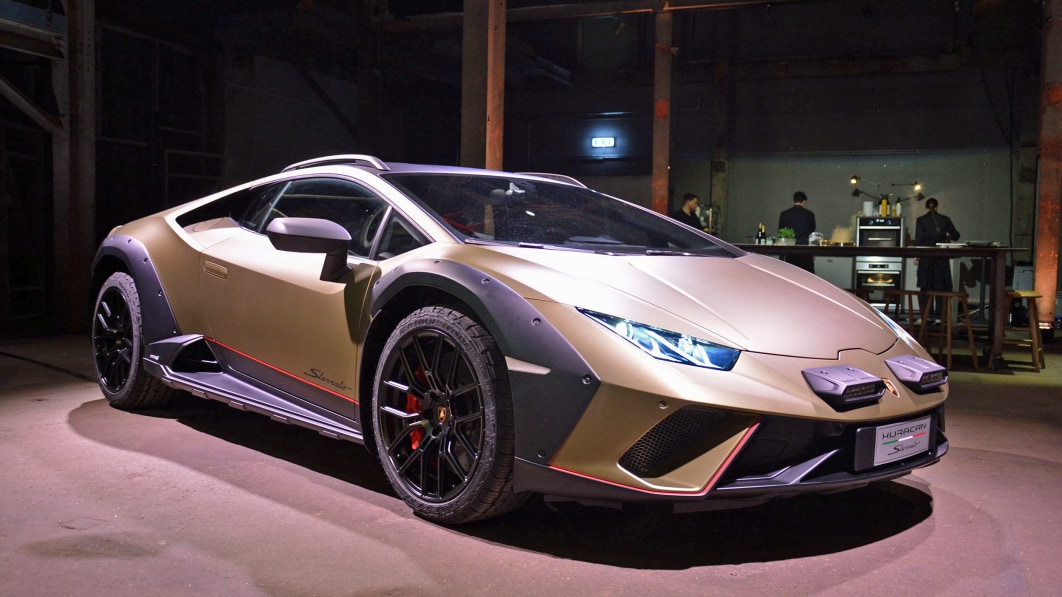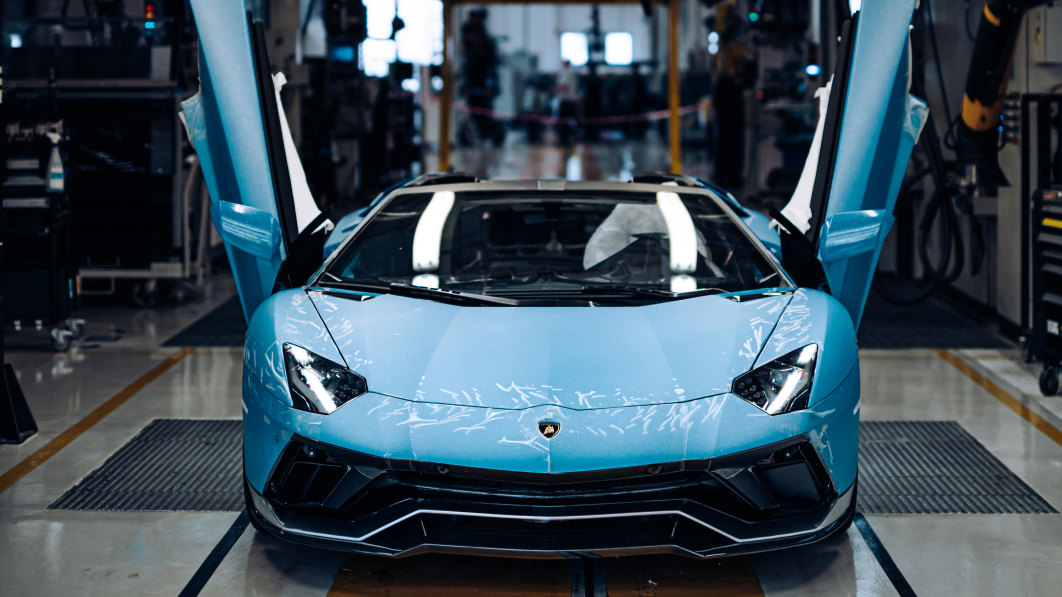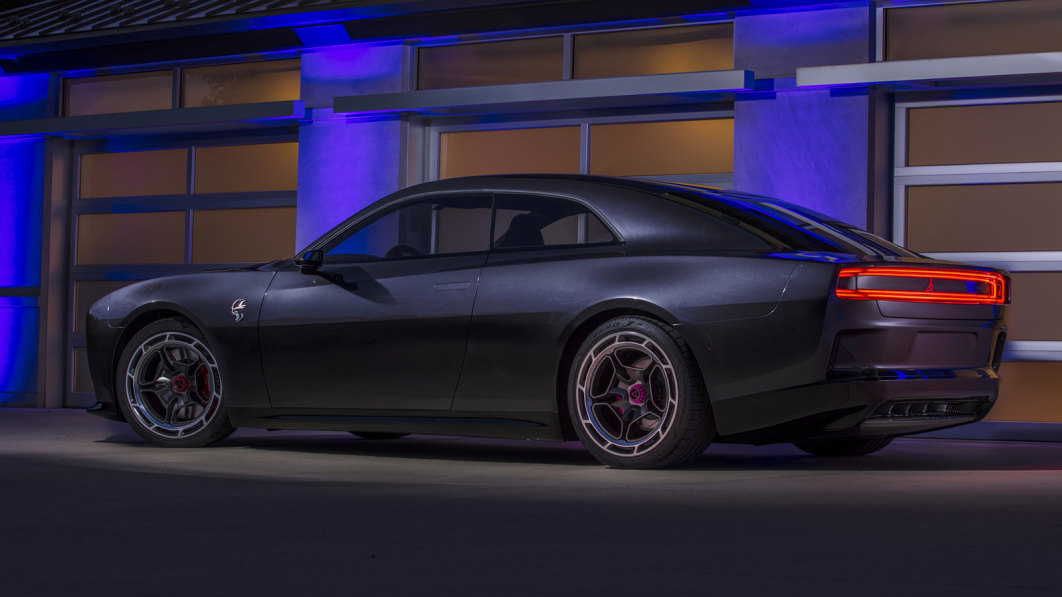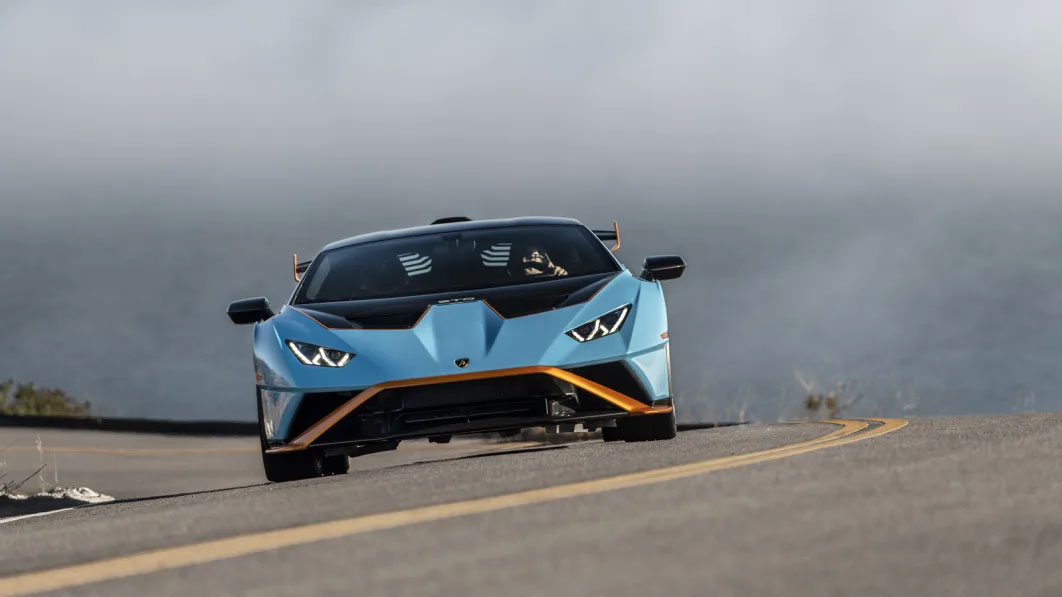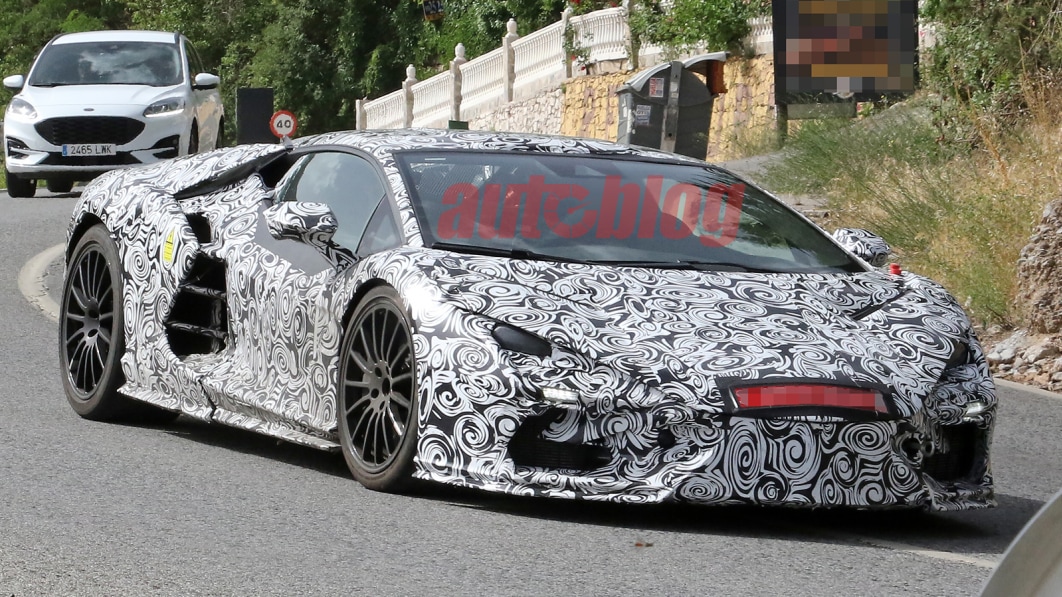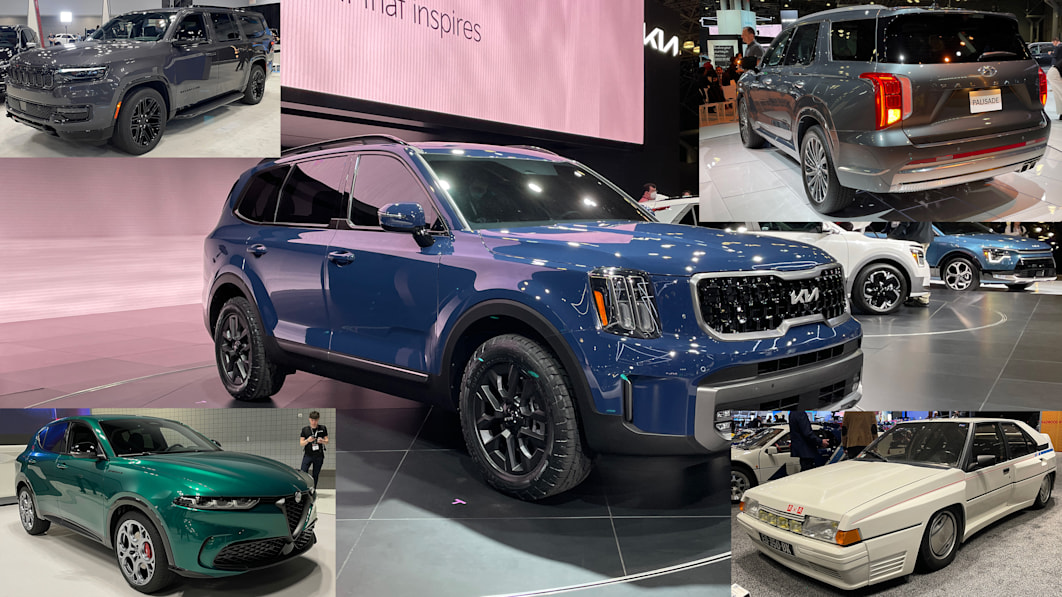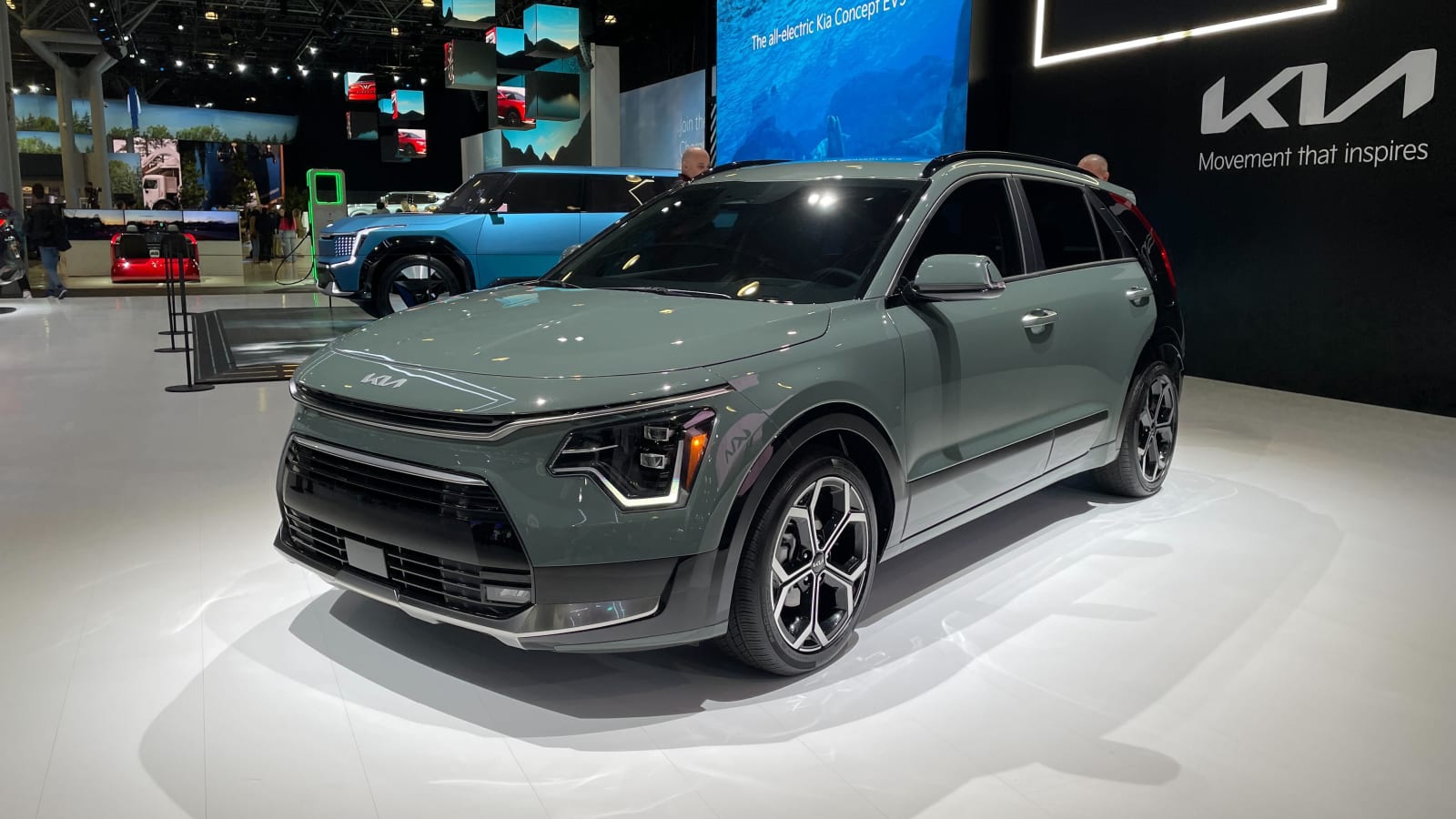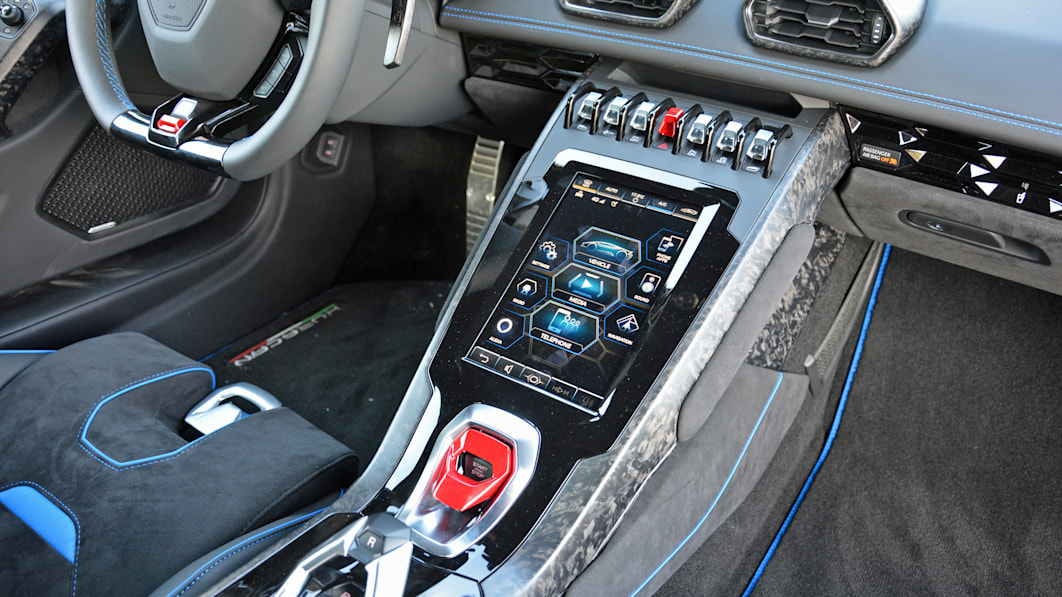NEW YORK — In case you missed it, the New York Auto Show took place this year after being canceled in both 2020 and 2021 due to Covid. A lot of manufacturers showed up in force, but not everybody did. No matter, we were there, and we brought you news, photos and scoops from the floor throughout the show. All of our New York-related stories can be found at our central hub here, but if you’d rather just get a small taste of everything in a quick and digestible format, keep scrolling.
![]()
Kia revealed the Telluride’s first major refresh at New York, and it makes the three-row crossover a little bit more desirable without screwing up what we liked about it before. There’s a new X-Line and X-Pro trim for someone who might want a little more off-road capability, and a number of tech improvements. Most notably, a newly-designed dash features new and bigger screens.
![]()
The Telluride’s sister car from Hyundai was treated to a similar refresh. Like the Telluride, Hyundai gave the Palisade a slightly revised look, a new off-road trim (called XRT in the Palisade’s case), more tech inside and a new dash design with full-width air vents. If we had to choose, we’re a little more impressed with the Telluride’s refresh, as a number of us on staff actually prefer the pre-refresh Palisade styling over the new one.
![]()
This one was inevitable. Jeep revealed the longer, roomier versions of its Wagoneer and Grand Wagoneer in New York, and they’re designated with an “L” at the end of their names. Total length grows by a foot, and the wheelbase goes up by 7 inches versus the standard Wagoneer models. Jeep has essentially allocated all this extra room to the cargo area, as it now offers a staggering 44.2 cubic-feet of space behind the third row.
Besides the L, Jeep announced that its new Hurricane inline-six engine would find its first home in the Wagoneer. Efficiency gets a small boost, and power is more than sufficient at either 420 horsepower (standard output) or 510 horsepower (high-output version) from the twin-turbo I-6.
![]()
The Stellantis party continues with Chrysler and its slightly revised Airflow. Re-styled for the New York market after initially debuting at CES in Las Vegas, the Airflow Concept gets new paint, changed accent colors, a slightly changed interior design and a new interpretation of the Chrysler logo.
![]()
This was our first chance to get a good in-person look at the new Kia Niro models headed our way, and we were impressed. It gets a totally new design, massaged powertrains in all three variants and an EV6-inspired interior. We even got to take a little deep dive into the standout Aero Blade design feature seen on all new Niros.
![]()
This was one of the minor debuts of the show — Subaru didn’t even hold a press conference. But the Outback was there on the show floor, and it was showing off its new Wilderness-inspired looks. The cladding is much more prominent, it has new lights up front, and Subaru packed it with a number of new tech features.
![]()
One year on from the Pathfinder being all-new, and Nissan just added an off-road-focused Rock Creek trim. It gets a slightly revised suspension, more power when run on premium fuel, all-terrain tires and a fairly comprehensive styling package. We liked the looks of it on the show floor, and while it may not be a super-capable SUV, having the option of a more rugged-looking SUV is seemingly a good thing to have in dealers these days.
![]()
The Leaf is getting outpaced by EVs with far more range, better tech and more power, but that hasn’t stopped Nissan from giving it a small nip-and-tuck. It gets a new grille, light-up Nissan logo, wild new wheels and a couple of aero enhancements.
![]()
This special-edition Ford GT pays tribute to the third-place car at the 1966 running of the 24 Hours of Le Mans. It re-creates that car’s look via matching paint, red accents and a number of other small details. Ford put it on display next to the car that raced at Le Mans back in 1966, making it an excellent display for any racing history geeks.
![]()
A collaboration between Williams Engineering, Italdesign and Deus, this electric hypercar is planned for super-low production, but incredibly high performance. Output is meant to be “more than 2,200 horsepower” and it has a claimed 0-62 mph time of 1.99 seconds. Only 99 are meant to be built, but we know that will be a tough, uphill battle to accomplish. Maybe, just maybe, you’ll see a Deus outside of the N.Y. Auto Show stand one day.
![]()
Yes, it’s another Huracán variant. This one steals a lot of the go-fast STO parts, but pairs them with a much more subdued appearance. It does well to make the appearance stand out as different from other Huracáns, and the 631 horsepower being sent to the rear wheels sound like Italian supercar bliss.
![2023 BMW X7 M60i]()
BMW didn’t bring it to the show floor, but we still got to see the refreshed X7 in New York this week. The design both inside and out gets a heavy revamping. Its look certainly isn’t for everyone, but nobody can deny that the car is turning heads. We’re impressed with the new interior, and the base xDrive40i powertrain gets a huge performance boost, giving the entry-level X7 a whopping 375 horsepower.
![]()
Debuting alongside the regular X7 was the Alpina XB7 that received its own styling tweaks to keep it current. It also adds 8 horsepower, bringing it up to 621 ponies from the twin-turbo V8.
![Genesis X Speedium Coupe]()
It wasn’t on the show floor, but Genesis still revealed it in New York during auto show time. The X Speedium Coupe Concept is far and away the most beautiful thing there. Its shooting brake/fastback design is long and wide, and its proportions make it a total stunner. The concept is electric, and while Genesis hasn’t committed to putting it into production, we can hope to see it on the roads one day.
Random other musings
![Fiat 500 Electric]()
For whatever reason, Fiat brought the Europe-only electric 500 to N.Y. Our Joel Stocksdale took a close look at it, and made a case for why Stellantis should bring the little EV to America.
![]()
Radwood showed up with a large collection of epic cars from the 1980s and 1990s. They were easily the coolest part of the show, and if you’re in town, it may be worth going just to see this group of cars at the Javits Center.
![]()
Lastly, Alfa brought the Tonale for us to check out in a gorgeous Montreal Green paint. It’s a sharp little crossover in the flesh, and we’re really looking forward to seeing how this Alfa drives.
Related video:


